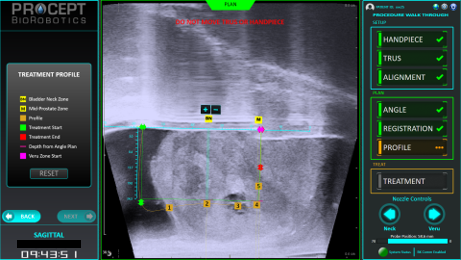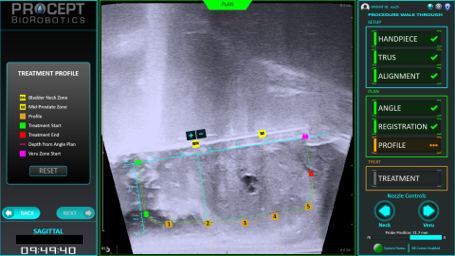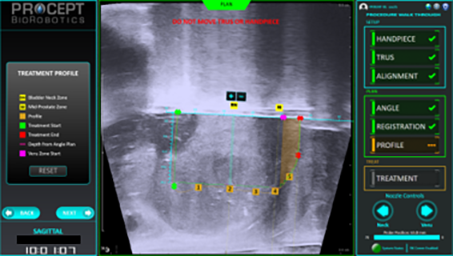Back
Poster, Podium & Video Sessions
Moderated Poster
MP29: Benign Prostatic Hyperplasia: Surgical Therapy & New Technology III
MP29-10: Aquablation in very large prostates (>150mL): technique and multicenter case series
Saturday, May 14, 2022
1:00 PM – 2:15 PM
Location: Room 225
Alexander Glaser*, Brian Helfand, Glenview, IL, Ali Kasraeian, Jacksonville, FL, Steve Sterious, Philadelphia, PA, Pooja Talaty, Glenview, IL, Miguel Alcantara, Kaitlyn Alcantara, Jacksonville, FL, Andrew Higgins, Eric Ghiraldi, Philadelphia, PA, Dean Elterman, Toronto, Canada

Alexander P. Glaser, MD
University of Chicago Pritzker School of Medicine
Poster Presenter(s)
Introduction: Aquablation has been well-studied in men with prostate volume (PV) <150ml. AUA guidelines distinguish surgical interventions for men with large prostates (80-150ml) and very large prostates (>150ml). In this study, we describe the technique for Aquablation in men with PV>150mL and outcomes in a multicenter case series.
Methods: Additional procedural steps for men with PV>150mL are often needed based on the maximum ablation length (7cm) and depth (2.4cm) (Figure 1). After the first pass, the handpiece position should be adjusted by tipping the handpiece down to maximize depth (Figure 2). For long prostates (>7cm), the handpiece should then be leveled and re-positioned at the external sphincter, then a third pass completed (Figure 3). Focal bladder neck hemostasis is then performed as previously described. Data from was collected retrospectively for men with PV>150mL including international prostate symptom score (IPSS), peak urinary flow rate (Qmax), length of stay, and blood transfusion.
Results: Thirty-four men (age 69 ± 8) were treated at four institutions. The average PV was 209mL ± 56 (range 151-362mL). Symptoms improved from a baseline IPSS 19 ± 6 to 7 ± 5 after mean follow-up of 7 ± 9 months. Qmax also improved from 7 ± 4 mL/s to 19 ± 5 mL/s. There were no reports of transfusion, urinary incontinence, erectile dysfunction, or ejaculatory dysfunction, and most patients were discharged POD1.
Conclusions: Most prostates greater than 150mL typically require repositioning of the handpiece for either depth or length. Preliminary data suggests Aquablation is effective and safe in prostates greater than 150mL.
Source of Funding: Drs. Helfand, Kasraeian, Sterious, and Elterman have had or currently have a consulting agreement with PROCEPT BioRobotics. No funding was received this manuscript.



Methods: Additional procedural steps for men with PV>150mL are often needed based on the maximum ablation length (7cm) and depth (2.4cm) (Figure 1). After the first pass, the handpiece position should be adjusted by tipping the handpiece down to maximize depth (Figure 2). For long prostates (>7cm), the handpiece should then be leveled and re-positioned at the external sphincter, then a third pass completed (Figure 3). Focal bladder neck hemostasis is then performed as previously described. Data from was collected retrospectively for men with PV>150mL including international prostate symptom score (IPSS), peak urinary flow rate (Qmax), length of stay, and blood transfusion.
Results: Thirty-four men (age 69 ± 8) were treated at four institutions. The average PV was 209mL ± 56 (range 151-362mL). Symptoms improved from a baseline IPSS 19 ± 6 to 7 ± 5 after mean follow-up of 7 ± 9 months. Qmax also improved from 7 ± 4 mL/s to 19 ± 5 mL/s. There were no reports of transfusion, urinary incontinence, erectile dysfunction, or ejaculatory dysfunction, and most patients were discharged POD1.
Conclusions: Most prostates greater than 150mL typically require repositioning of the handpiece for either depth or length. Preliminary data suggests Aquablation is effective and safe in prostates greater than 150mL.
Source of Funding: Drs. Helfand, Kasraeian, Sterious, and Elterman have had or currently have a consulting agreement with PROCEPT BioRobotics. No funding was received this manuscript.




.jpg)
.jpg)